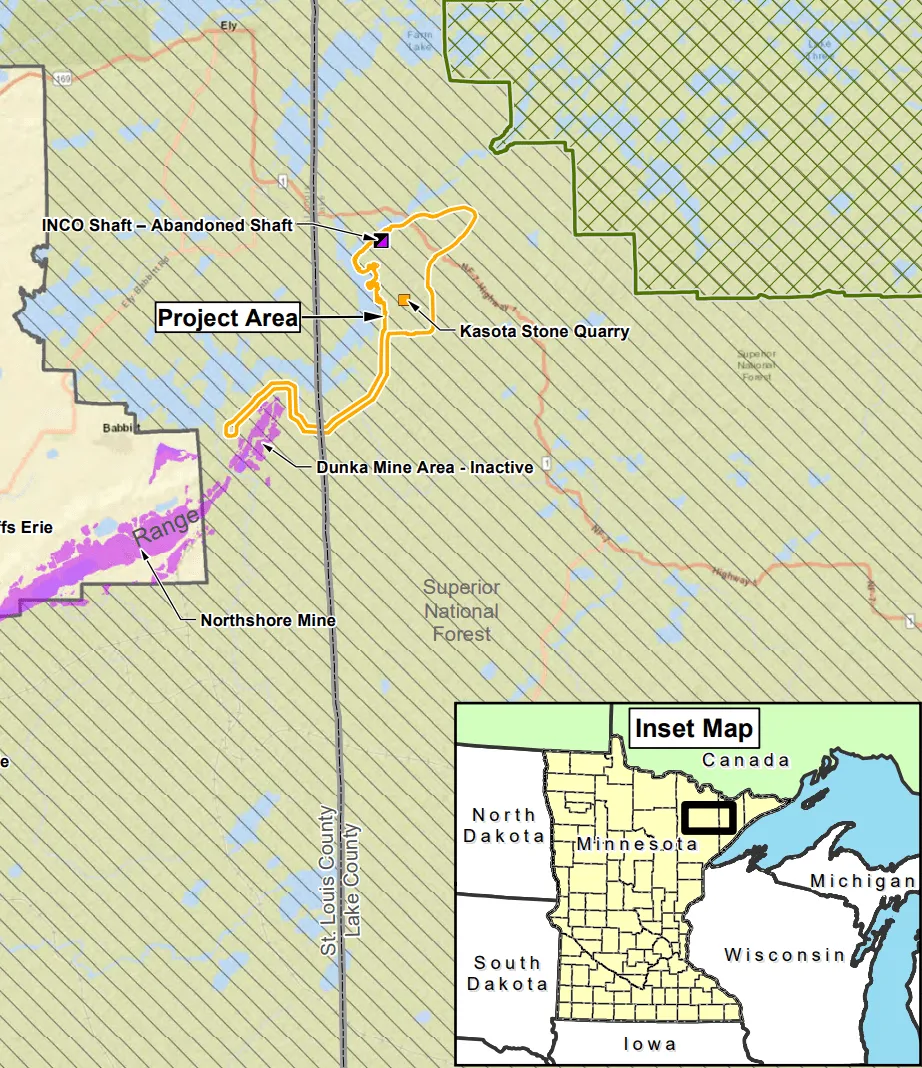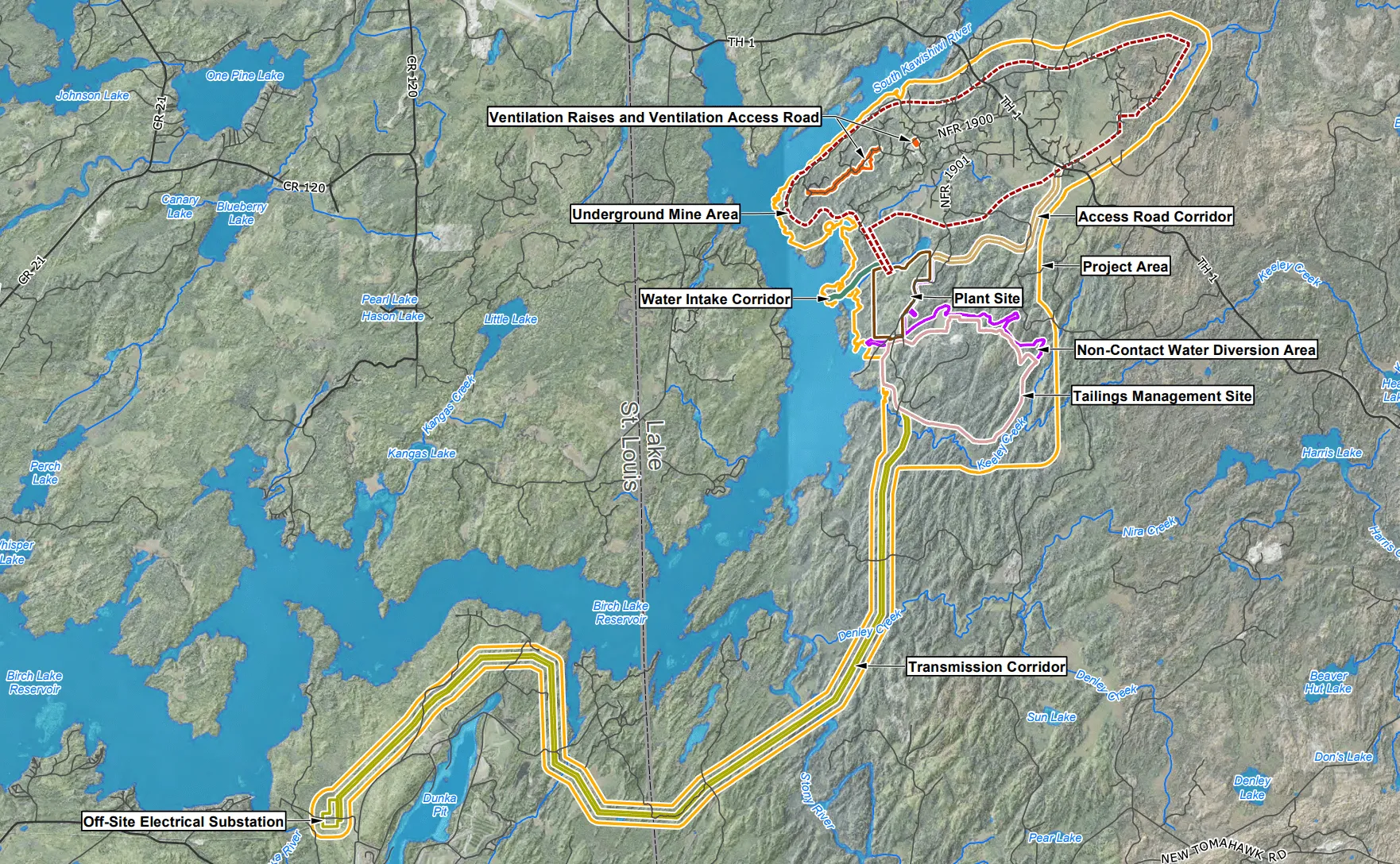Mining has evolved through history, read our comprehensive guide to metals and mining for more insights into investing in the sector.
Twin Metals Minnesota provides copper, nickel, platinum, and related mineral mining services. The company was founded in January 2010 and is headquartered in St. Paul, Minnesota.
#Who Owns Twin Metals Mining?
An essential part of Minnesota’s rich mining history, Twin Metals Mining is a homegrown company.
The team lives and works in Minnesota, proud to contribute to the state's mining legacy that spans over 130 years. The team is comprised of seasoned mining veterans, including a lead geologist with over a decade of exploration experience in Minnesota, a director of operations and safety, born and raised in Ely, and a CEO with 35 years of mining experience.
Twin Metals Minnesota is a subsidiary of Chilean miner Antofagasta PLC (LSE: ANTO) (OTC: ANFGF). Guided by the leadership of Antofagasta, a leading global copper producer, the Twin Metals mining team places a strong emphasis on worker and environmental safety.
#Twin Metals Mine Location
Located about nine miles southeast of Ely and 11 miles northeast of Babbitt, the Twin Metals Mining project is set to contribute significantly to the local economy.
The mine is situated in the Maturi deposit, part of the Duluth Complex geologic formation, and aims to extract battery materials such as copper, nickel, cobalt, and platinum group metals. The Twin Metals copper-nickel mine and processing plant will be situated adjacent to Birch Lake and the South Kawishiwi River, both situated within the Rainy River basin.
The project promises an impressive economic impact, with over 750 direct full-time jobs and 1,500 spinoff jobs expected to breathe new life into northeast Minnesota.
The Twin Metals project will be the state’s first underground mining operation – an approach that minimizes surface disruption, noise, and dust — since the closure of Ely’s Pioneer Mine in 1967.
This brings us to the Twin Metals mine location and the Twin Metals mine map, which shows an extensive area rich in mineral deposits.


The project's strategic location and the abundance of resources position it well for long-term economic development.
#Mine Setup
The operation will be divided into five zones, mined sequentially. The mineralized ore will be separated from the waste rock underground and conveyed to the surface via a conveyor belt. Once the mining in a particular area, or stope, is complete, it will be backfilled with waste rock and sealed.
The processing site of Twin Metals Mining will include entrances to two 1.25-mile declines or downward-sloped tunnels. The first will transport workers underground, and the second will hold a conveyor belt to move crushed ore to the surface for mineral extraction.
Twin Metals Mining has chosen the dry stack method for tailings management, a process that has been used in several North American mines, including Eleonore in Quebec, Greens Creek and Pogo in Alaska, Raglan in Quebec, and Pumpkin Hollow in Nevada. This environmentally friendly method compresses the leftover tailings into sand-like deposits and stores them on a lined ground facility near the plant site. This approach eliminates the storage pond and dam associated with conventional tailings facilities, further reducing the project's environmental footprint.
Twin Metals Mining's commitment to the Boundary Waters region is clear. They're not just investing in the company; they're investing in the future of northeast Minnesota with a $1.7 billion commitment through the construction of the mine. The company's focus extends beyond economic development to health and wellness, education, environmental stewardship, personal and community safety, and investment in the future.
The Twin Metals Mining project is an exciting prospect for Minnesota's economy, workforce, and environment. It's not just about extracting minerals from the ground; it's about fostering economic growth, job creation, and environmental sustainability for future generations.
#Environmental Opposition
Opposition to mining in Minnesota has been growing for many years. In June, the U.S. Forest Service released a draft environmental assessment proposing a 20-year moratorium on copper-nickel mining near the Boundary Waters Canoe Area Wilderness. The proposal would "withdraw" about 352 square miles in the Rainy River watershed, within the Superior National Forest, from new mineral leasing.
This could thwart the Twin Metals mine near Birch Lake but wouldn't impact the proposed PolyMet mine in a different watershed. The proposal aims to avoid further environmental impacts from mining and assesses the impacts of future mining on social, cultural, and economic values. Interior Secretary Deb Haaland will make the final decision on the moratorium.
Twin Metals responded by asserting that the study was not science-based and contradicts the Biden administration's objectives to ensure domestic availability of copper and other minerals required for renewable energy.
